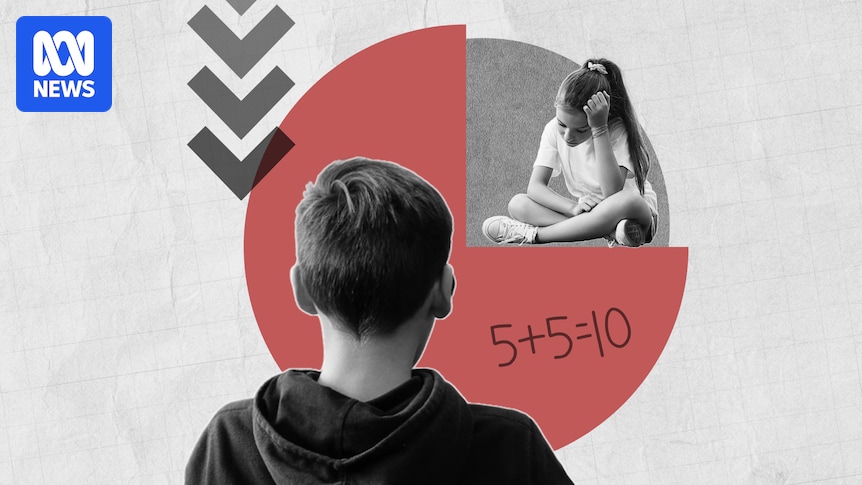Australian Kids Failing Maths? New Teaching Methods Could Help
Editor’s Note: Concerns about declining maths scores in Australian schools have prompted the development of innovative teaching methods. This article explores the challenges and potential solutions.
Why This Matters: The Growing Maths Crisis in Australia
Australia faces a growing concern: declining mathematics proficiency among its students. This isn't just about test scores; it impacts future economic competitiveness and individual opportunities. A strong foundation in mathematics is crucial for success in STEM fields, driving innovation and technological advancement. This article delves into the reasons behind this worrying trend and examines promising new teaching approaches designed to reverse the decline. We will explore the key aspects of the problem, analyze the effectiveness of new methodologies, and offer practical tips for parents and educators.
Key Takeaways
| Issue | Solution | Impact |
|---|---|---|
| Declining Maths Scores | Implementation of inquiry-based learning, personalized learning platforms | Improved student engagement and comprehension, better test results |
| Teacher Training Gaps | Upskilling programs focusing on modern pedagogical approaches | More effective instruction, tailored to diverse learning styles |
| Lack of Engagement | Gamification of learning, real-world applications of mathematical concepts | Increased student motivation and improved understanding |
| Limited Resources | Increased funding for educational resources, technology integration | Better access to learning tools and improved learning environments |
Australian Kids Failing Maths: A Deeper Dive
The declining performance of Australian students in mathematics is a complex issue with multiple contributing factors. While PISA scores fluctuate, a consistent trend reveals a need for reform. This isn't solely about a lack of inherent ability; rather, it points to systemic issues within the education system. These issues include:
- Traditional Teaching Methods: Rote learning and a lack of practical application often fail to engage students, leading to a lack of understanding and disinterest in the subject.
- Teacher Training: A shortage of adequately trained mathematics teachers, especially those familiar with modern pedagogical approaches, exacerbates the problem.
- Resource Inequality: Disparities in access to quality resources and technology between schools contribute to uneven outcomes.
- Curriculum Gaps: A curriculum that may not sufficiently cater to diverse learning styles and paces further contributes to the challenge.
Inquiry-Based Learning: A Promising Solution
One innovative approach gaining traction is inquiry-based learning. This student-centered methodology encourages active participation and problem-solving, fostering a deeper understanding of mathematical concepts. Instead of passively receiving information, students are actively involved in investigating, questioning, and constructing their own knowledge. This approach aligns perfectly with the current focus on building 21st-century skills such as critical thinking and problem-solving.
Personalized Learning Platforms: Tailoring Education to Individual Needs
The use of personalized learning platforms offers another potential solution. These platforms adapt to individual student needs, providing customized learning paths and targeted support. This approach addresses the diverse learning styles and paces of students, ensuring that no one is left behind.
Gamification and Real-World Applications: Making Maths Fun and Relevant
Gamification in the Classroom
Introducing game-like elements into mathematics lessons can significantly increase student engagement and motivation. Interactive exercises, challenges, and rewards can transform a traditionally dry subject into an exciting and rewarding experience. The use of educational apps and online platforms further enhances this engagement.
Real-World Applications
Connecting mathematical concepts to real-world scenarios is crucial for making the subject relatable and relevant to students. By showing the practical applications of mathematics in everyday life, from budgeting to engineering, we can foster a deeper appreciation and understanding of its importance.
People Also Ask (NLP-Friendly Answers)
Q1: What is the current state of maths education in Australia?
A: Australia is facing declining maths scores among students, highlighting a need for improved teaching methods and resources.
Q2: Why are Australian kids struggling with maths?
A: Factors include traditional teaching methods, teacher training gaps, resource inequality, and a curriculum that might not cater to diverse learning styles.
Q3: How can new teaching methods help improve maths scores?
A: Inquiry-based learning, personalized learning platforms, gamification, and real-world applications can boost engagement and understanding.
Q4: What are the long-term consequences of poor maths education?
A: It limits opportunities in STEM fields, impacting Australia's economic competitiveness and individual students' prospects.
Q5: What can parents do to support their children's maths learning?
A: Parents can engage in learning activities at home, use educational apps, and communicate with teachers to understand their child’s progress.
Practical Tips for Improving Maths Education
- Advocate for Inquiry-Based Learning: Encourage schools to adopt student-centered approaches.
- Support Teacher Professional Development: Promote opportunities for teachers to upskill in modern pedagogical techniques.
- Utilize Educational Technology: Explore and integrate engaging educational apps and online platforms.
- Connect Maths to Real-World Applications: Help students see the relevance of maths in everyday life.
- Foster a Growth Mindset: Encourage students to embrace challenges and view mistakes as learning opportunities.
- Collaborate with Teachers: Maintain open communication with teachers to monitor progress and provide support.
- Make it Fun: Incorporate games and interactive activities into learning at home.
- Seek Extra Help if Needed: Don't hesitate to seek tutoring or other support if your child is struggling.
Summary: The decline in Australian students' mathematics performance is a serious concern that requires immediate attention. By implementing innovative teaching methods, improving teacher training, and providing equitable access to resources, Australia can equip its students with the mathematical skills needed to thrive in the 21st century.
Closing Message: The future of Australian innovation hinges on a mathematically proficient workforce. Let's work together to ensure our students are equipped with the skills they need to succeed.
Call to Action: Share this article to raise awareness about the importance of improving maths education in Australia. Visit [link to relevant resource/website] for more information on supporting your child's maths learning.

